Declining WIC Participation in Southwestern Pennsylvania

Special Supplemental Nutrition Program for Women, Infants, and Children (WIC) participation is decreasing in Southwestern (SW) Pennsylvania (PA) (Bureau of WIC, 2023).

WIC is an assistance program supporting low-income children (ages 1 -5), infants (newborn - 1 year old), and also postpartum non-breastfeeding, breastfeeding, and pregnant women (Food and Nutrition Service, 2013).
An individual is eligible for WIC if they are an infant (i.e. newborn - first birthday), child (first birthday - fifth birthday), pregnant woman (up until six weeks after pregnancy's end), breastfeeding woman (until their child's first birthday), or a postpartum non-breastfeeding woman (up until to six months after pregnancy's end) (Food and Nutrition Service, 2013).
A health professional must also deem the individual to be at nutritional risk. Examples of nutritional risk include medical reasons (e.g. being anemic) or dietary reasons (e.g. having poor nutrition practices) (U.S. Department of Agriculture, 2022).
Lastly, to qualify for WIC assistance an individual must be living in a household with an income at or below 185% of the poverty line. If they are already eligible for Supplemental Nutrition Assistance Program (SNAP) benefits, Temporary Assistance for Needy Families (TANF), or Medicaid are automatically income eligible for WIC (Carlson & Neuberger, 2021).
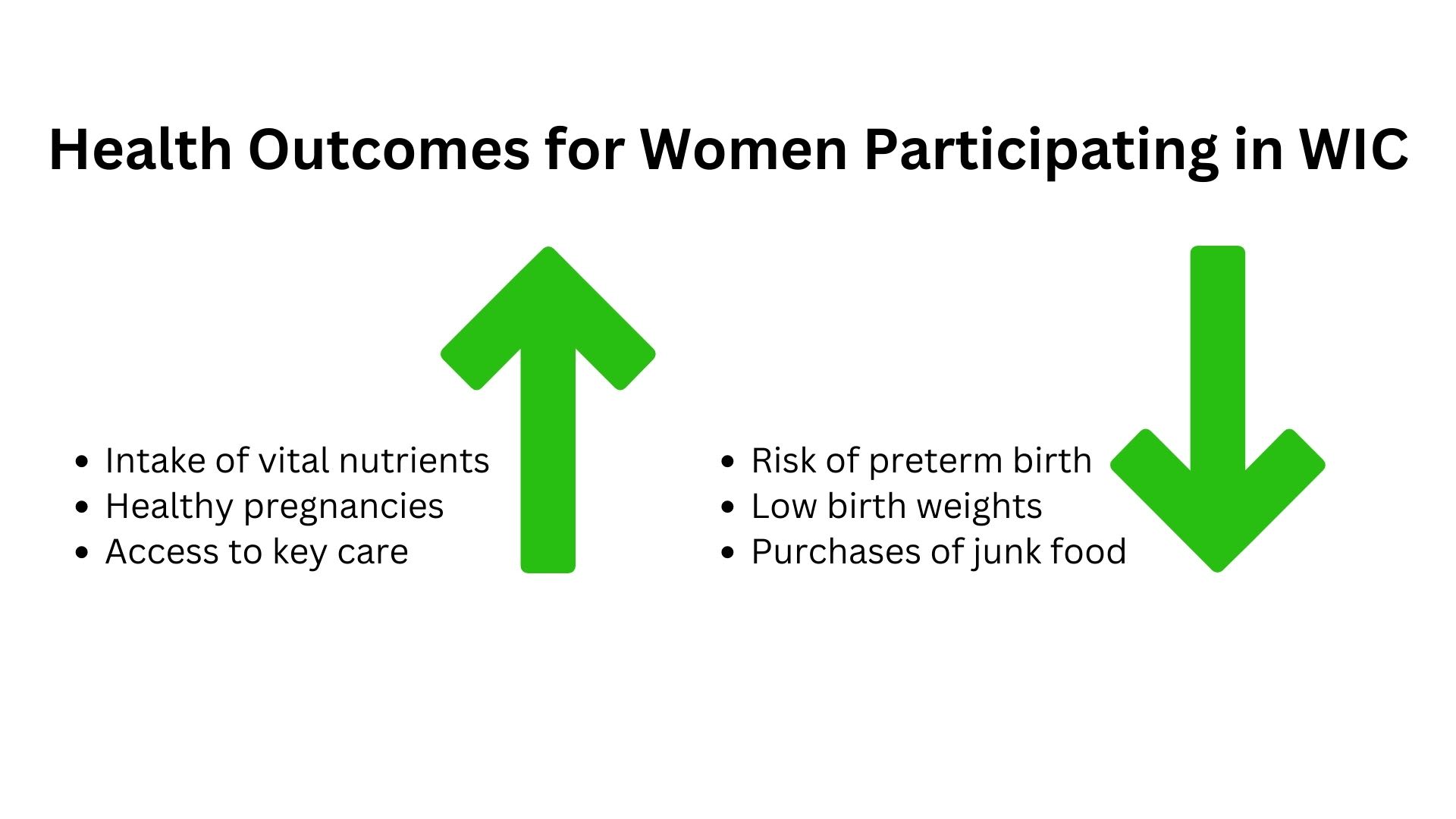
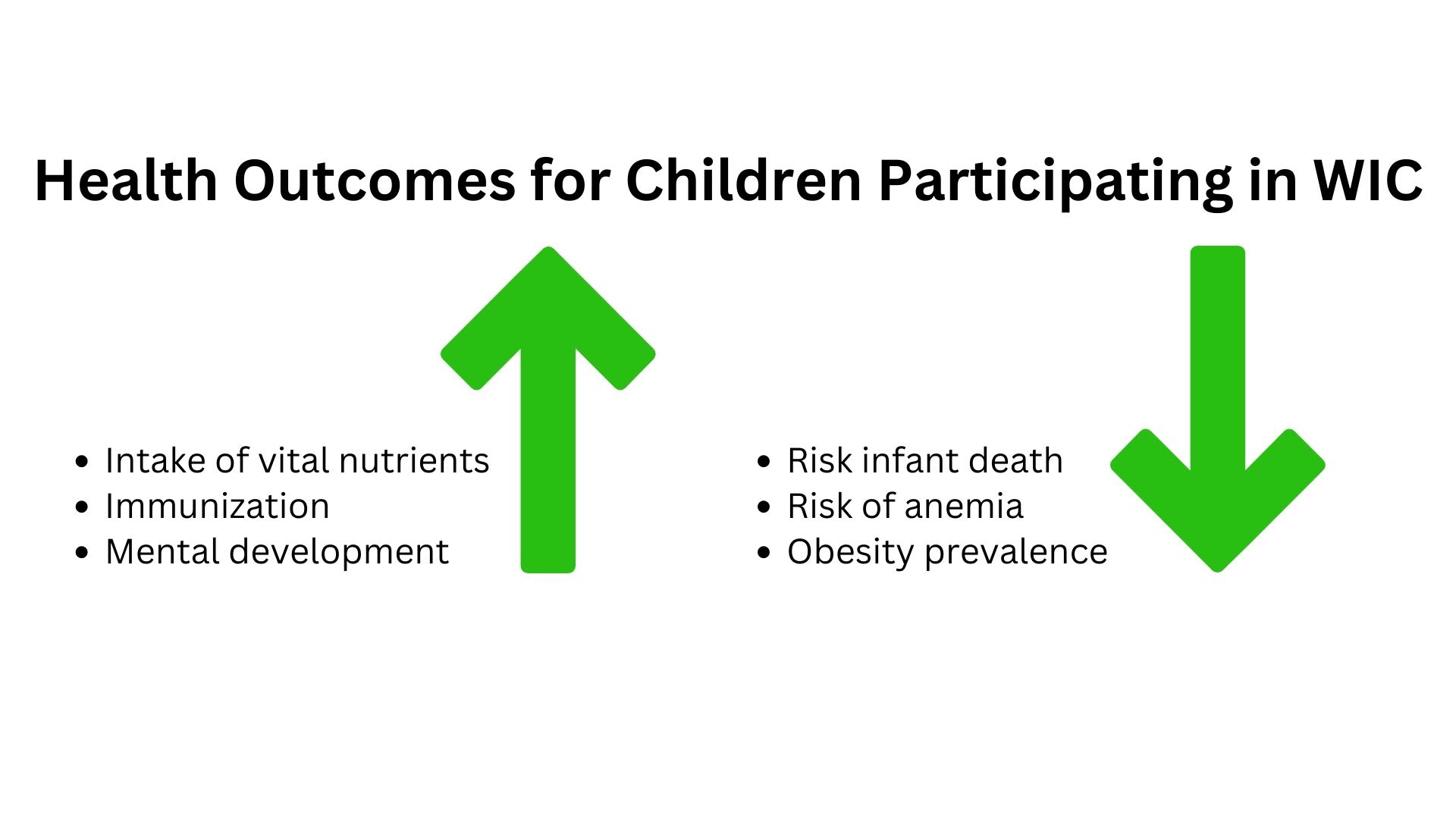
Sources for graphics: (Carlson & Neuberger, 2021) and (National WIC Association, 2021)
Who is Using WIC in Southwestern Pennsylvania?

Postpartum women and children (ages 1 -5) make up the largest share of participants in the region. Pregnant women and infants fully using formula are the next biggest category of participants. Breastfeeding mothers and infants are the smallest categories of participants. This means that most women participating in WIC do not breastfeed.
Overall, WIC participation in SW Pennsylvania is clearly declining over the last 25 months
But is it declining across each participant category?

WIC participation declines only among non-breastfeeding children.
WIC participation declines only among non-breastfeeding children.
Similarly, WIC participation declines only among non-breastfeeding mothers.
Across both types of participants (mothers and children), the groups that are breastfeeding participate at higher levels than non-breastfeeding groups. Overall participation is declining, but the number of breastfeeding mothers and infants participating in WIC has increased over the last 25 months.
WIC participation declines only among non-breastfeeding children.
WIC is an underutilized program in Southwestern Pennsylvania

41% of eligible participants in SW Pennsylvania participate in WIC (Thriving PA, 2022a).
59% of eligible participants in SW Pennsylvania DO NOT participate in WIC (Thriving PA, 2022a).
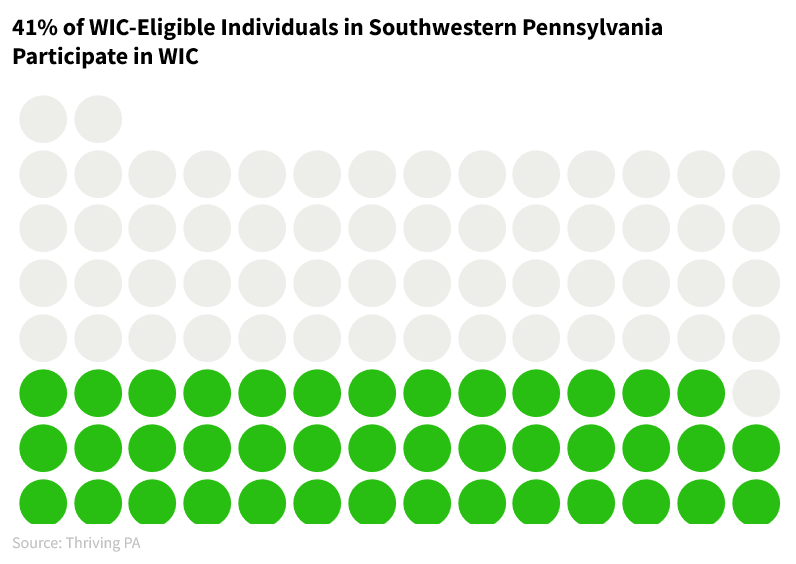
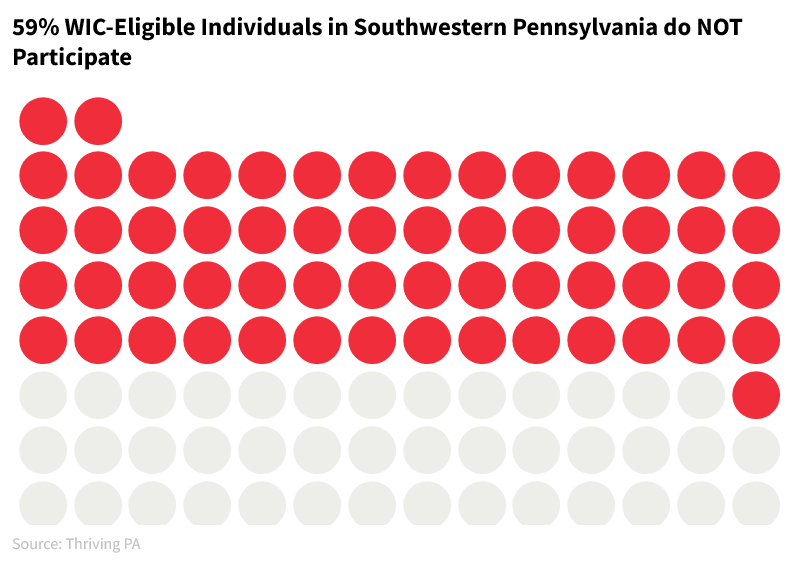
That is problematic because program funding is tied to participation.
With less available funding, there is less support for program resources. There is also less money to help with engaging the target population and recruiting them to enroll in the program. It is an uphill battle to increase participation since decreasing precipitation limits the program's ability to recruit new participants (Thriving PA, 2022b).
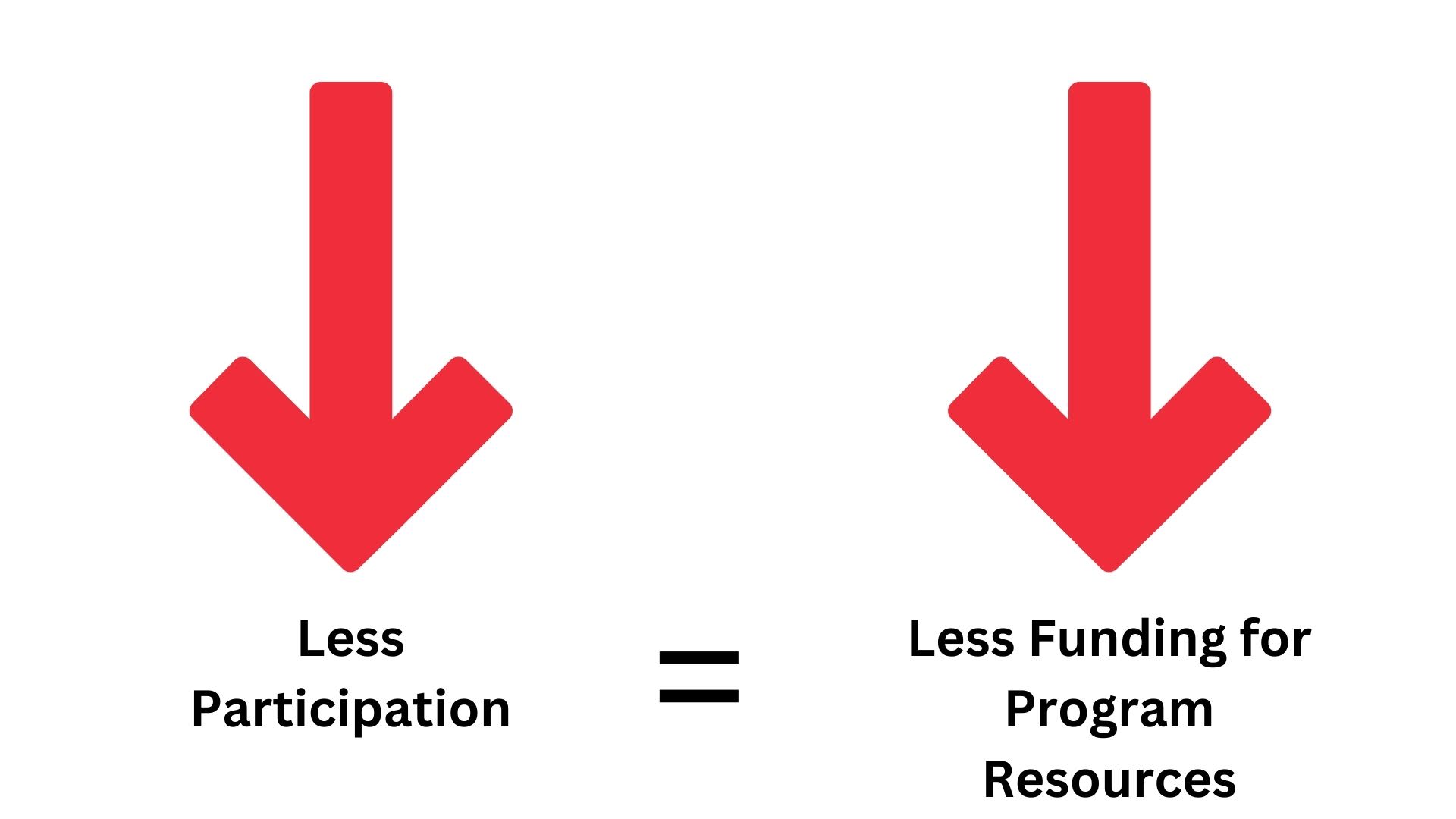
Greater awareness of what WIC offers can increase participation in the area

WIC provides women, infants, and children with money for nutritious food. There are seven food packages that are tailored to the need of participants based on their stage of life (National WIC Association, 2021). Additionally, there are three components of WIC that deserve more attention. Greater awareness of these three components can increase WIC participation in Southwestern Pennsylvania.

Photo by Jonathan Borba on Unsplash
Photo by Jonathan Borba on Unsplash
Three Important WIC Components
1. WIC provides nutrition counseling
The program provides individualized counseling for individual participants and their families. Certified nutrition professionals provide information that is catered to the needs of participants. There is no set curriculum and counselors provide advice in individual, group, and online settings. WIC's nutrition counseling supports participants in making healthy decisions for their families (National WIC Association, 2021).
2. WIC provides breastfeeding support
WIC is America's leading breastfeeding support program. It targets low-income mothers, a group that faces many barriers to breastfeeding. The program provides several resources to help mothers overcome this barrier. WIC provides individual support and education to support breastfeeding mothers. This support is offered to mothers before and after childbirth. WIC clinics also provide participants with access to breast pumps. WIC participants that breastfeed have access to breastfeeding peer counselors and a special food package (National WIC Association, 2021). Lastly, breastfeeding women receive WIC support six months longer than non-breastfeeding mothers do (Food and Nutrition Service, 2013).
3. The Pennsylvania WIC program has modernized
WIC funds are now loaded onto an Electronic Benefit Transfer (EBT) card. Previously, participants received a check in the mail. WIC participants also are eligible for vouchers at farmer's markets. This increases their ability to purchase fresh produce. Most WIC appointments can also be done virtually (Thriving PA, 2022b).
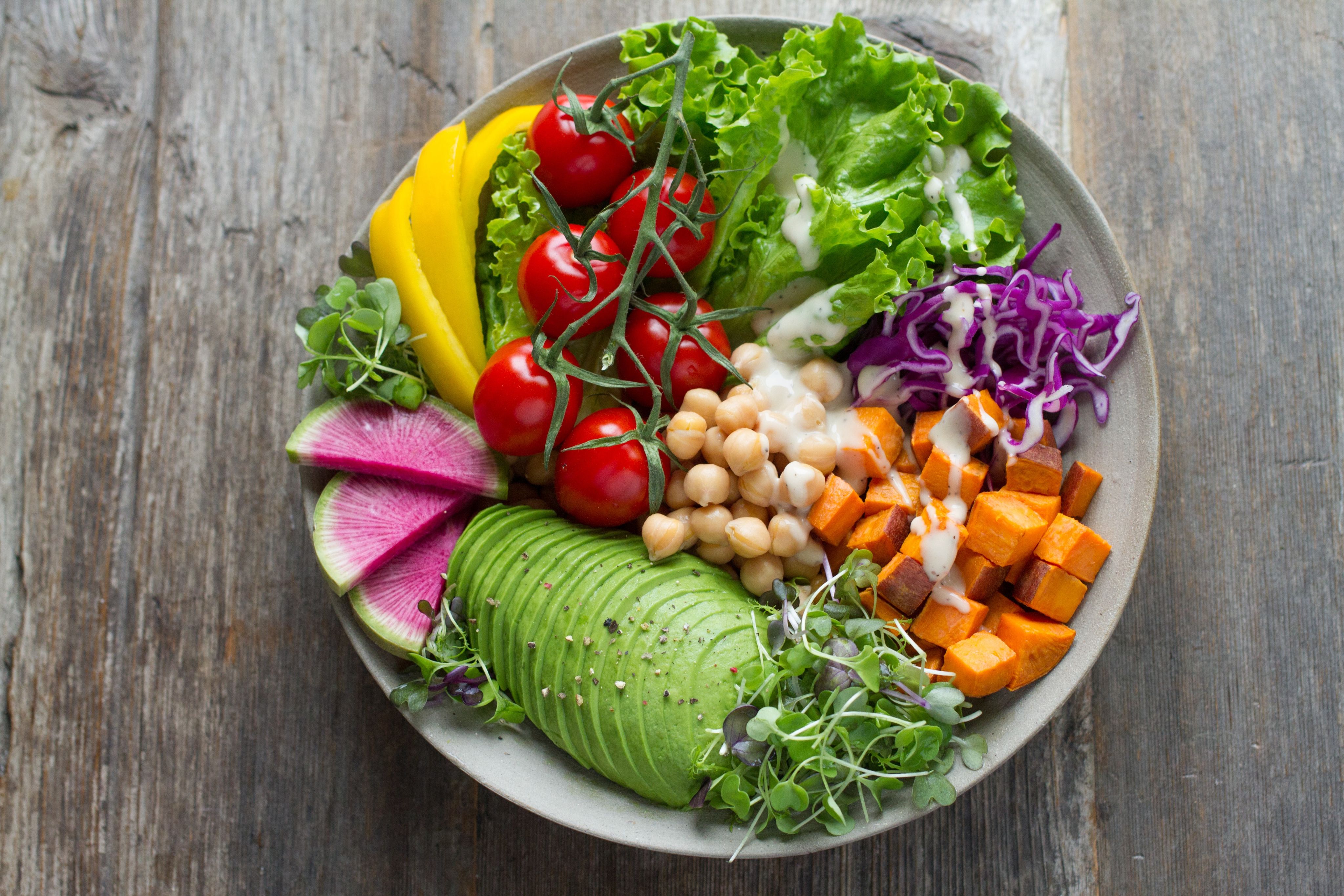
Photo by Anna Pelzer on Unsplash
Photo by Anna Pelzer on Unsplash

Photo by Kelly Sikkema on Unsplash
Photo by Kelly Sikkema on Unsplash

Photo by Dylan Ferreira on Unsplash
Photo by Dylan Ferreira on Unsplash
What can you do to help increase WIC participation in the region?
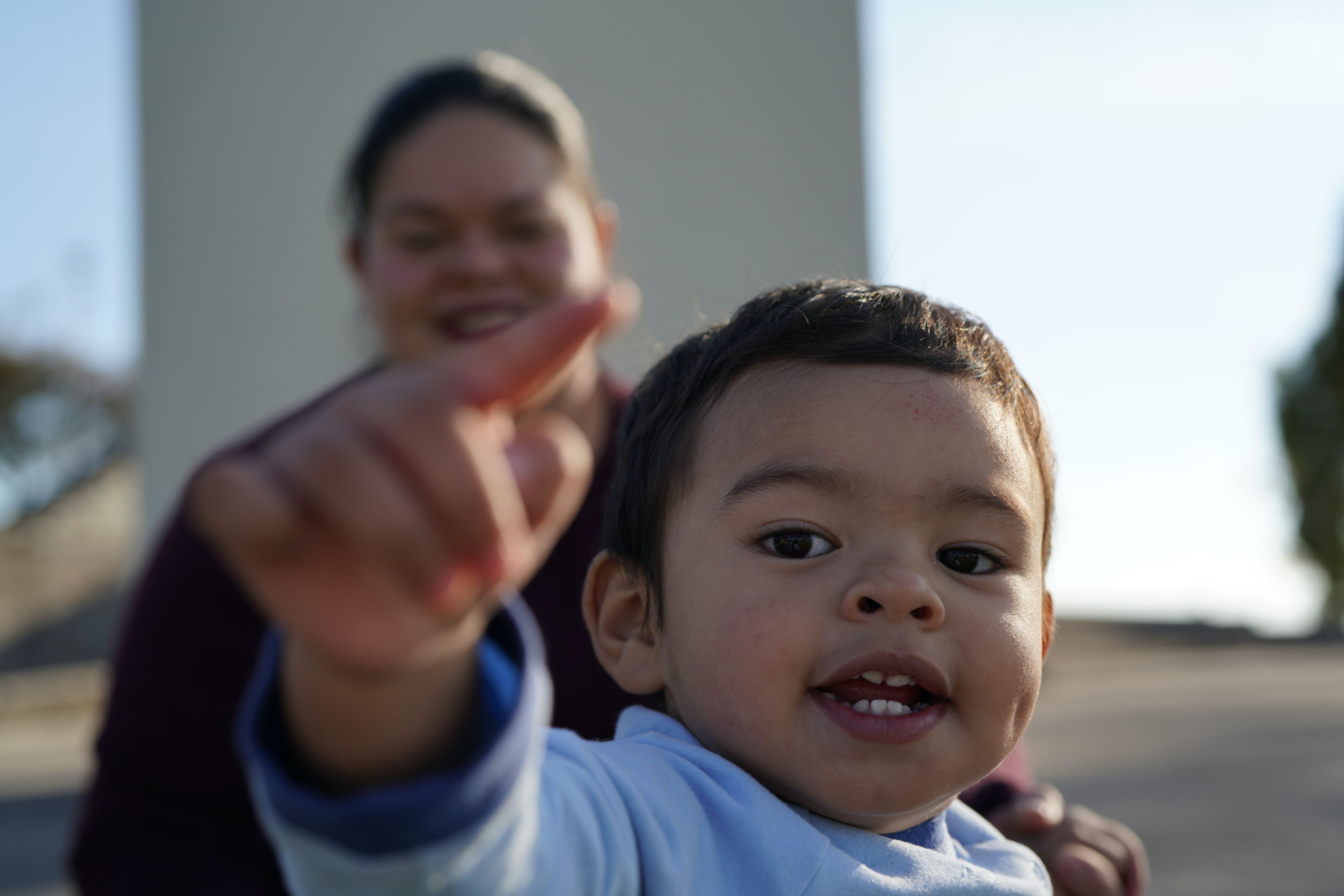

Photo by Vidar Nordli-Mathisen on Unsplash
Photo by Vidar Nordli-Mathisen on Unsplash
As a resident of SW PA:
Encourage eligible individuals to sign up, tell them about what WIC offers, take them to their nearest WIC clinic, and if they want to learn more, tell them to google 'PA WIC'

Photo by Katherine McAdoo on Unsplash
Photo by Katherine McAdoo on Unsplash
As a PA policymaker:
Advocate for and promote program benefits that will increase participation in the PA WIC program
References
Bureau of WIC. (2023). PA WIC program data. [Data set]. https://www.pawic.com/PAWICProgramData.aspx
Carlson, S., & Neuberger, Z. (2021). WIC works: Addressing the nutrition and health needs of low-income families for more than four decades. Center on Budget and Policy Priorities. https://www.cbpp.org/research/food-assistance/wic-works-addressing-the-nutrition-and-health-needs-of-low-income-families
Food and Nutrition Service. (2013, October). About WIC - WIC at a glance. U.S. Department of Agriculture. https://www.fns.usda.gov/wic/about-wic-glance
National WIC Association. (2021). The state of WIC: Healthier pregnancies, babies, and young children during COVID-19. https://thewichub.org/the-state-of-wic/#chapter-title-page
Thriving PA. (2022a). Prenatal and children’s nutrition (women, infants and children program – WIC). https://thrivingpa.org/resources/prenatal-and-childrens-nutrition-women-infants-and-children-program-wic/
Thriving PA. (2022b). WIC participants encourage improvements to remove barriers to access: Thriving PA community sessions feedback. https://online.flippingbook.com/view/928849259/
Thriving PA. (2022c). Women, infants and children (WIC) program: Allegheny county [Fact sheet]. https://thrivingpa.org/wp-content/uploads/2022/06/Allegheny-WIC-Fact-Sheet-2022.pdf
Thriving PA. (2022d). Women, infants and children (WIC) program: Beaver county [Fact sheet]. https://thrivingpa.org/wp-content/uploads/2022/06/Beaver-WIC-Fact-Sheet-2022.pdf
Thriving PA. (2022e). Women, infants and children (WIC) program: Butler county [Fact sheet]. https://thrivingpa.org/wp-content/uploads/2022/06/Butler-WIC-Fact-Sheet-2022.pdf
Thriving PA. (2022f). Women, infants and children (WIC) program: Washington county [Fact sheet]. https://thrivingpa.org/wp-content/uploads/2022/06/Washington-WIC-Fact-Sheet-2022.pdf
Thriving PA. (2022g). Women, infants and children (WIC) program: Westmoreland county [Fact sheet]. https://thrivingpa.org/wp-content/uploads/2022/06/Westmoreland-WIC-Fact-Sheet-2022.pdf
U.S. Department of Agriculture. (2022). The special supplemental nutrition program for women, infants, and children (WIC program) [Fact sheet]. https://www.fns.usda.gov/wic/wic-fact-sheet

